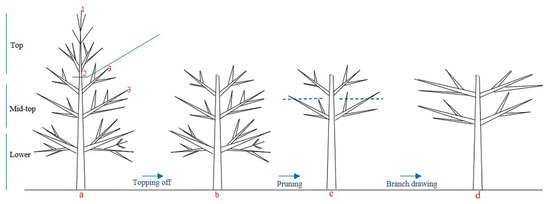Flowering, the beginning of the reproductive growth, is a significant stage in the growth and development of plants. Conifers are economically and ecologically important, characterized by straight trunks and a good wood quality and, thus, conifer plantations are widely distributed around the world. In addition, conifer species have a good tolerance to biotic and abiotic stress, and a stronger survival ability. Seeds of some conifer species, such as Pinus koraiensis, are rich in vitamins, amino acids, mineral elements and other nutrients, which are used for food and medicine. Although conifers are the largest (giant sequoia) and oldest living plants (bristlecone pine), their growth cycle is relatively long, and the seed yield is unstable. Flowering and seed yields in conifers are affected by a variety of factors, such as pollen, temperature, light, water availability, nutrients, etc., and a number of management techniques, including topping off, pruning, fertilization, hormone treatment, supplementary pollination, etc. has been developed for improving cone yields.
- conifers
- flowering
- seed production
- pollination
- tree management
- nutrient fertilization
1. Factors Affecting Seed Formation and Development
1.1. Pollen
1.2. Temperature and Light
1.3. Water and Nutrient Fertilization
1.4. Molecular Mechanisms
2. Technical Measures of Breeding and Management
2.1. Supplementary Pollination
2.2. Topping Off

2.3. Thinning and Pruning
2.4. Girdling and Cutting Roots
This entry is adapted from the peer-reviewed paper 10.3390/horticulturae7080252
